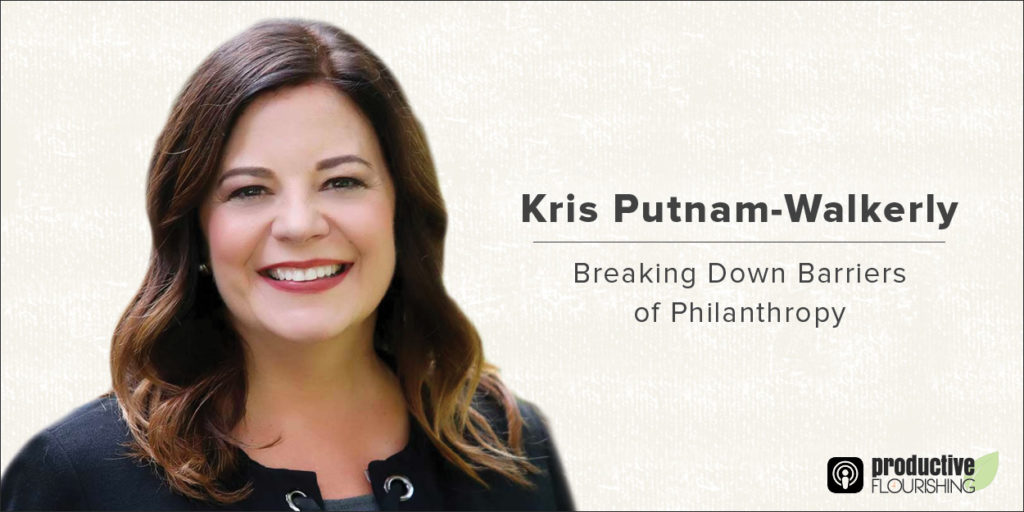Just about every aspiring mom (and dad) has big plans and preconceived ideas about what pregnancy and parenthood will be like. You picture the way your life might change, you plan out a nursery, order a crib – it’s pretty straightforward stuff. Straightforward, that is, until you discover you’re having twins! Suddenly, all those plans and preconceptions go out the window, and you have to rethink everything. The basic premise is still the same – you’re bringing new life into the world and want to raise it well – but now the reality in which you’ll operate is vastly different than expected.
The realities in which foundations operate bring similar shifts and challenges on a regular basis. We start out our careers or our new initiatives with clear hopes and goals of what we want accomplish, only to find that real life has other plans. Frequently, we must learn lessons of humility and adaptability, and re-think what was already well thought out.
Here are four “mom lessons” to help you handle the curve balls!
1. Always accept offers of help – On a plane, if someone offers to help put your luggage in the overhead compartment, always say yes. When they walk around offering you water, always say yes. Want to sit down? Yes. Want me to do the dishes? Yes. How about if I drive? Yes. Need advice on parenting twins? Yes. Want to take a nap? YES!
One of the things I most enjoy and appreciate about philanthropy is that we have a culture of helping one another. Unlike Pepsi vs. Coke, the Robert Wood Johnson Foundation doesn’t need to worry that the Bill and Melinda Gates Foundation has planted spies among its employees, looking to steal the best new innovation in evaluation or access to health care. Generally speaking we all want to help each other and advance the collective good. This means at any given time there are many people, ideas, programs, conferences, training programs, coaches, etc. ready and available to help you, whatever your need.
Starting a new foundation? You can turn to your local regional association of grantmakers, Exponent Philanthropy, National Center on Family Philanthropy, the Council on Foundations, or a consultant for advice. New CEO? There are many programs and resources that want to help you, including my CEO Springboard program. Developing a new grant program? There is probably an affinity group of funders who can offer ideas. And if you reach out to key leaders in your field, chances are high they will gladly schedule time to talk with you. Take advantage of this willingness to help – you will avoid pitfalls and achieve greater impact down the road.
2. Lower your expectations – This might sound as if it flies in the face of my recent Forbes article about having a Scarcity vs Abundance Mentality, but hear me out.
When I was pregnant I read an article that advised pregnant moms of multiples to immediately start lowering our expectations. It told us to make a list of everything we have on our plates — volunteer activities, household chores, work, classes, hobbies, entertaining, exercise, birthday party planning, grocery shopping, carpooling, public speaking, work-related travel, whatever. Then start crossing things off or ratcheting them down because you simply won’t be able to do it all and be a mom to two (or three or four) newborns. If you serve on a board of directors, take a leave for 6 months; tell the teacher you will no longer be available to volunteer in class this year; take the semester off from your evening MBA program; let friends and neighbors bringing you meals for the first month; tell colleagues you are no longer travelling more than 50 miles but would be happy to Skype. Instead, focus on maintaining the activities that are most helpful to your current situation and will give you energy. While I took time off of serving on my local community foundation board, I joined a local “moms of twins” club.
As funders of course we should set high expectations for our organizations, our staff, and our grantees. But we should also be aware that we could easily work 72-hour days trying to get it all done, burn out our employees, and set up our grantees for failure and our boards for disappointment with unrealistic expectations. It is far better to prioritize the activities that provide the greatest impact, are the best use of our talents and assets, have the highest chance of success, and let the rest go for now. This isn’t to say you won’t invest enthusiastically in your goals, but instead of launching your 5-pronged strategy to increase youth employment, make it 2-pronged and phase the other three in later after the first two have early wins.
3. Get a solid infrastructure in place – A few months after my twins were born, my friend Rose asked how I was doing. “You know,” I said, “It’s not as hard as everyone makes it out to be.” “That’s because you have all your infrastructure in place,” she replied. She was right! I made sure we bought a house that was flexible enough for new kids, 3 step kids, a home office, and a guest room. I made sure we moved into a family friendly neighborhood. I hired a nanny who started work two days after we brought the twins home from the hospital, so that I could continue to expand my consulting practice. We had a house cleaner. We lived near a lot of family who could help us and we had a guest room where they could stay for awhile. I married a husband who gladly changed diapers and cooked dinner. I had my infrastructure in place to ease my transition into motherhood, and it helped me to be a less stressed-out mom and still allowed me to work.
Grantmakers similarly need to make sure they have their infrastructure in place to position their staff and grantees for success, now and into the future. This can include ensuring adequate staff capacity, attending to leadership development across the organization, upgrades in technology to allow staff to be productive while traveling, having a strategic communications plan to leverage the impact of your grants; hiring consultants to bring specific expertise; professional development opportunities for staff; provision of technical assistance for grantees; regularly conducting evaluation so you know when and how to make course corrections; etc. A solid infrastructure not only can help reduce staff stress, but also can better position your organization to adapt when those unexpected shifts occur.
4. Don’t obsess over everything – While other pregnant moms of multiples were busy finding recipes for homemade baby food and cleaning their air ducts (because God forbid their babies might breath a dust molecule), I was helping my oldest stepdaughter apply to college, including organizing visits to many campuses (waddling around with my large belly). But while other moms of 17-year-olds were busy researching every college in depth and spending $50,000 (not kidding) on tutors and college application coaches to help get their kids into the best university, I was busy throwing up.
The benefit of being pregnant while helping my stepdaughter get into college was that I didn’t have time to obsess over either activity. I got the twins’ nursery ready but not one that would be featured in a Pottery Barn Kids catalog. I encouraged and reminded my stepdaughter to apply early for the greatest chance of acceptance, but didn’t fill out the application for her to make it happen. I had to focus on the most essential, or what I was best suited to influence, and let the rest go.
In philanthropy there are endless societal problems to tackle, and many high performing leaders, innovations, and solutions to support. We simply can’t do it all, or do it all well. We are better off focusing on fewer causes, fewer strategies, a more limited geographic area, or some other way to narrow and prioritize our work. Ask yourself “If our foundation could only accomplish one thing with this funding initiative over the next three years, what should it be? Realistically, what can it be?” Focus on that first. As you get going you might choose to expand, or you might choose to go deeper.
Philanthropy, like life, is always full of surprises that require reconsideration and adjustment – and that’s a good thing. If things are always completely controlled and predictable, then what’s the point? Being able to learn and adjust as you go – both about your work and yourself – is a gift. It not only keeps you sane, but frequently opens the door to an opportunity or reward that you never could have envisioned. And that is what keeps our work exciting, engaging and worthwhile.
Do You Need To Rapidly Refresh Your Strategic Plan?
To navigate and lead during turbulent times, you need a flexible strategy. Your strategy defines what you want to accomplish and how you want to accomplish it. Yet too often, philanthropists lack clarity on both.
Sentient Strategy® is a revolutionary approach to formulate strategy quickly, to be used immediately for as long as conditions warrant, and then to make changes rapidly as conditions change. It builds a simple and flexible strategic approach that creates a road map for change and holds people accountable for rapid implementation.
Kris Putnam-Walkerly is one of only a dozen consultants globally who have been certified by Alan Weiss to deliver Sentient Strategy®.
Breaking Down Barriers of Philanthropy
Tune in to my recent podcast where I talk to Charlie Gilkey about what the future of investing and funding may look like as we move toward a recovery period after the pandemic.
“At the end of the day, we should all be about change – about racial justice, social justice, systems change, structural change – so we can address these inequities that are so pervasive.”
– Kris Putnam-Walkerly








